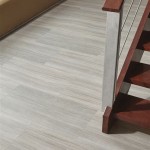Solar Radiant Heat Flooring Systems: A Comprehensive Guide
Solar radiant heat flooring systems, a growing trend in sustainable home heating solutions, harness the power of the sun to provide comfortable and energy-efficient radiant warmth. These systems offer numerous advantages, including reduced operating costs, environmental friendliness, and enhanced comfort levels.
Components of a Solar Radiant Heat Flooring System
A typical solar radiant heat flooring system consists of the following components:
- Solar collectors: These devices capture sunlight and convert it into thermal energy.
- Storage medium: A water- or glycol-based fluid circulates through the collectors, absorbing heat and storing it for later use.
- Radiant floor tubing: The storage medium flows through PEX tubing embedded within the flooring, releasing heat into the room.
- Controller: This device regulates the system's operation, ensuring optimal performance and energy efficiency.
Benefits of Solar Radiant Heat Flooring
Solar radiant heat flooring systems offer several compelling advantages:
- Lower Energy Costs: By leveraging solar energy, these systems can significantly reduce monthly heating bills.
- Sustainability: Solar radiant heat is a renewable energy source, minimizing greenhouse gas emissions and promoting environmental protection.
- Enhanced Comfort: Radiant heat warms rooms evenly from the floor up, providing a comfortable and cozy atmosphere.
- Improved Air Quality: Unlike forced-air systems, radiant heat does not circulate dust and allergens, improving indoor air quality.
- Long Lifespan: Solar radiant heat flooring systems typically have a lifespan of 25-30 years, making them a long-term investment.
How Solar Radiant Heat Flooring Works
Solar radiant heat flooring systems operate through the following process:
- Solar collectors absorb sunlight and transfer heat to a circulating fluid.
- The heated fluid is pumped through radiant floor tubing embedded within the flooring.
- As the fluid circulates, it releases heat into the room, raising its temperature.
- The controller monitors the system's performance and adjusts heat output as needed.
Factors to Consider When Choosing a Solar Radiant Heat Flooring System
When selecting a solar radiant heat flooring system, consider the following factors:
- Climate: The amount of solar radiation available in your region will impact system efficiency.
- Home size and insulation: The size of your home and its insulation levels influence the amount of heat required.
- Budget: Solar radiant heat flooring systems can be more expensive than traditional heating methods.
- Expertise: Proper installation is crucial. Consider hiring a qualified professional for optimal performance.
Conclusion
Solar radiant heat flooring systems provide a sustainable and energy-efficient approach to home heating. With lower operating costs, enhanced comfort levels, and a reduced environmental footprint, these systems offer a compelling investment for homeowners seeking a modern and efficient heating solution.

Solar Energy And Radiant Floor Heating Ontario Home Builders

Solar Radiant Floor Heating Ontario Home Builders

Thermo Dynamics Ltd Solar Radiant Heating

Heating Water With Solar Energy Diy Radiant Floor Company

Heating Water With Solar Energy Diy Radiant Floor Company
Solar Radiant Floor Heating Water Heater

Thermo Dynamics Ltd Solar Radiant Heating

Heating Water With Solar Energy Diy Radiant Floor Company

Radiant Heating Department Of Energy

Heating Water With Solar Energy Diy Radiant Floor Company
Related Posts








